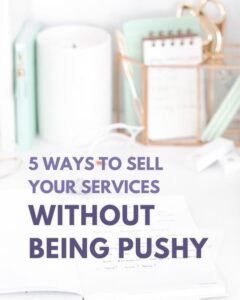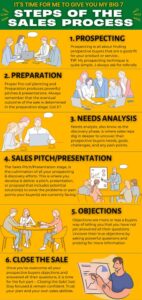How To Sell Without Selling
Imagine a sales conversation where you effortlessly guide your prospects toward a resounding “yes”. But you did it without resorting to pushy tactics or manipulative techniques. A conversation where you understand how to sell without selling.
Picture a scenario where you connect with potential clients on a deep emotional level.
Where you lead them to make decisions driven by their own desires and motivations. Instead of what YOU want as the salesperson.
It sounds almost too good to be true, doesn’t it?
Well, get ready to have your sales game revolutionised.
We’re diving into the world of selling without selling.
In this article, we’ll unlock the secrets to positioning yourself as a trusted authority. Building emotion that resonates with your prospects. And how harnessing the power of well-crafted questions can uncover what they really want.
But why is all of this so important?
Why should you bother with positioning and emotion?
The answer lies in the art of persuasion. And the pivotal role emotions play in our decision-making process.
In a world where customers are bombarded with endless sales pitches and advertisements, it’s no longer enough to rely on features and benefits.
To truly stand out and captivate your audience, you need to forge a genuine connection, awakening within them a burning desire for change.
If you’ve done a great job with your marketing, the prospect will already feel a connection with you, even if you have no idea who they are.
By using questions strategically, you’ll uncover their deepest desires, and compel them to confront the consequences of doing NOTHING.
So, fasten your seatbelts and prepare to unlock the secrets of how to sell without selling.

How To Sell Without Selling
The Importance Of Positioning – How To Sell Without Selling
There’s no better place for us to start.
The same is true in a sales conversation, you should always start with positioning.
When it comes to sales conversations, the art of positioning can make the difference between success and failure.
Picture this.
You pick up the phone, and you’re ready to connect with a potential client. Within the first few moments, you have their undivided attention.
How is this possible?
It all starts with positioning
At the start of a call, positioning sets the stage for everything that follows.
It helps you deal with objections LONG before they happen.
Which makes for a much stronger conversion rate.
And it’s your opportunity to make a powerful first impression.
Strong positioning will help you establish yourself as a trusted authority in your field.
By positioning yourself well, you build credibility and give your prospects confidence.
Paving the way for a fruitful conversation.
Think of positioning as the foundation that the rest of your sales pitch is built.
It builds a solid platform so that you can showcase your expertise. Showcase your unique value proposition, and demonstrate why you’re the best person to guide your prospects towards their desired outcomes.
But most importantly, it shows you as the authority and lets the prospect know what’s coming.
Establishing your expertise through positioning builds trust.
When they perceive you as a knowledgeable and experienced professional, they are more likely to relax.
And be receptive to your ideas and recommendations.
Positioning helps you differentiate yourself from the competition, making it clear why you are the ideal choice for them.
So, how can you effectively position yourself and your services?
What should you position?
At the start of a sales call or meeting, position what the rest of the call will look like.
It helps the prospect relax, they know that you are in control, and it stops them from worrying about what’s next.
At the end of a call or meeting, you should position some key pieces of information.
The first one is what happens next…
If you’re halfway through a sales process, tell them what the rest of the process looks like.
And if they are signing up as a customer, tell them what happens next.
The second thing that you should position at the end of the call is the things that you could get objections on.
Positioning the price is a good example of this.
If you don’t tell the prospect the price all the way through the process, then when you finally tell them the price, if it’s out of their range… you’ve wasted a lot of time.
But the longer ahead of time that you position something, the more chance the customer has to get their head around it.
When there’s a good amount of time before paying for something or making a decision, it relieves the pressure.
If there’s anything else you are getting objections on, position them earlier.
For example, if you get a lot of objections when you ask the prospect to make a decision, the chances are, you didn’t position it strongly enough or early enough.
If you’d told them on the first call that they’ll make a decision, they’ll relax and find the headspace to make it.
Positioning helps the prospect relax because you’re telling them what’s going to happen.
For clarity, at the start of the call… position the rest of the call. How long you’ll be on the call for, what you’ll cover, and what you’ll do next.
At the end of a call, position the rest of the sales process, what your prices are, when you’ll make a decision together, and anything else that you usually get objections on.
Remember, positioning is not a one-time event.
It should be consistently used, every call you have with a prospect.
And when you get really good at positioning, your profit will start to soar.

Positioning – How To Sell Without Selling
Building Emotion When Selling – How To Sell Without Selling
Now that we’ve laid the foundation with effective positioning, it’s time to ignite the emotional spark that will truly captivate your prospects.
Emotions are the driving force behind our decisions.
Logic may provide the reasoning, but it’s our emotions that push us to take action.
Your goal is to tap into those emotions and connect with your prospects on a deeper level.
But how do you go about building emotion in your sales conversations?
It starts with understanding your prospects’ desires, dreams, and aspirations.
You want to help them paint a vivid picture of how their lives could be transformed by working with you.
One effective way to do this is by asking thought-provoking questions.
These questions should evoke strong emotions and get your prospects to envision their ideal future.
For example, you might ask, “What it would feel like to have a thriving business that gives you the financial freedom to live life on your own terms?”
“What would you do differently?”
“How would it impact your daily life?”
By asking these types of questions, you create a space for your prospects to dream. It helps them connect with their deepest desires.
You’re not explicitly selling to them.
You’re simply guiding them on a journey of self-discovery.
And as they tell you their dreams and aspirations, the emotional connection between you and your prospects grows stronger.
In addition to exploring their desires, it’s essential to address the pain points and challenges your prospects are currently facing.
We often buy to avoid pain.
That’s why building a little bit of pain is important.
By asking questions that highlight their current struggles and the potential consequences of inaction, you create a sense of urgency and a compelling need for change.
For instance, you might ask:
“What would happen if you continue on the same path without making any changes to your business?”
“How would it impact your financial stability?”
“How would it impact your personal life and your overall happiness?”
By delving into their pain points, you help your prospects confront the harsh reality of their situation, motivating them to seek a better future.
Remember, building emotion is not about manipulating or preying on your prospects’ vulnerabilities.
It’s about genuinely connecting with them.
Understanding their desires and pain points, and showing empathy and compassion.
When you tap into their emotions, you become their trusted partner on their journey toward success.

How to use emotion in sales
Effective Questions To Ask – How To Sell Without Selling
Well-crafted questions can uncover what your prospects really want.
Then you can help guide them toward making decisions aligned with their own desires.
When you take a second to step back and start working ON your business, you can design and craft questions that will make a huge difference.
Here are a few types of questions that can help you in your sales conversations.
Open-ended questions
These questions encourage your prospects to provide detailed answers and express their thoughts and feelings. They cant be answered with a simple “yes” or “no.” For example, you might ask, “What are your biggest goals for your business in the next year?”
Once you’ve asked a question like this, sit tight and stay silent.
If they take a while to think, that’s good news. Don’t jump in.
Problem-oriented questions
These questions help you understand the pain points and challenges your prospects are facing.
They allow you to dig deeper into their current situation and the problems they are trying to solve. For instance, you could ask, “What obstacles are stopping you from reaching your goal?”
Solution-focused questions
Solution-focused questions help your prospects envision a future where their problems are solved.
They encourage them to think about the positive outcomes and benefits they could achieve by working with you. For example, you might ask, “How would overcoming these challenges impact your business and personal life?”
Motivation-based questions
These questions tap into your prospect’s motivations and desires. They explore what drives them and what they truly want to achieve. For instance, you could ask,
“What inspired you to start your business in the first place?”
“What keeps you motivated to continue?”
Outcome-oriented questions
These questions help your prospects envision the specific results they can expect from working with you. They focus on the benefits and transformations they will experience.
For example, you might ask, “How would having a clear and effective marketing strategy impact your customer acquisition and revenue growth?”
Remember, the key to asking effective questions is to actively listen to your prospects’ responses.
Pay attention to their words, tone, and emotions. This will allow you to tailor your conversation and provide personalized solutions that truly resonate with them.
By combining strategic positioning, building emotion, and asking the right questions, you can master the art of selling without selling.
You’ll create a genuine connection with your prospects, guide them toward their desired outcomes, and ultimately achieve success in your business endeavors.

The Art of Closing – How To Sell Without Selling
Closing the sale is a pivotal moment in any sales conversation.
It’s the point where you transition from building rapport and understanding your prospect’s needs to asking for their commitment.
Effective closing techniques are essential to seal the deal.
Let’s explore why closing is important and how you can do it successfully without being pushy.
Closing the sale is crucial because it brings the conversation to a resolution.
And that’s really important.
Instead of prolonging your pain by dragging the affairs on and on.
The close is the culmination of all the groundwork you’ve laid. Whether that’s in positioning, building emotion, or addressing objections. Without a proper close, the sales process may linger, and your prospect may lose interest or seek other options.
One useful closing approach is to ask a question such as, “Does it make sense for us to move forward with X?”
This question allows the prospect to express their level of interest and evaluate the value you’ve presented. If their response is positive, you can proceed to discuss the next steps and solidify the commitment.
But, if they say no, it’s an opportunity to uncover their concerns and objections.
When a prospect responds negatively, avoid becoming pushy or aggressive.
Instead, ask an open-ended question like, “Then what does make sense for you at this point?”
This approach shows respect for their decision and opens the door for further exploration.
It allows you to understand their perspective better and tailor your offering accordingly. By engaging in this conversation, you may discover new information that could help you reposition your product or service to better meet their needs.
Asking for a prospect’s commitment should be done with confidence and professionalism but without pressure.
Here are some tips to ask for their commitment effectively:
Summarise the benefits
Remind the prospect of the key benefits they will gain from working with you. Reinforce how your solution addresses the pain points they told you about.
Address remaining concerns
Before asking for commitment, make sure that you’ve fully addressed any lingering concerns or objections the prospect may have. Take the time to clarify any misunderstandings. And provide additional information or evidence to alleviate their doubts. It shows your commitment to their success and builds trust.
Use assumptive language
Rather than asking a vague question like, “Are you ready to proceed?” use assumptive language that implies the next steps. For example, say, “Based on our discussion, it seems like moving forward with our solution would be beneficial for your business. Shall we proceed with the implementation plan?”
Offer options
If the prospect is hesitant, provide them with alternative options that cater to their specific needs. This shows flexibility and allows them to choose the best fit for their situation. Presenting options can help them feel more in control and increase their willingness to commit.
Remember, the art of closing is about guiding the prospect towards a decision while respecting their autonomy and freedom.
Summarise the benefits, address concerns, and provide a clear path forward.
By focusing on the value you bring and actively listening to the prospect’s feedback, you can navigate the closing process smoothly and increase your chances of securing the sale.

Summary – How To Sell Without Selling
In this captivating journey through the art of how to sell without selling, we have uncovered the secrets to change your sales game and sign new prospects like never before.
Your communication skills are going to go through the roof.
By diving deep into the realms of positioning, building emotion, and closing the sale, you can unlock a world of possibilities.
Throughout this article, we have shown you the importance of building emotion and connecting with your prospects on a profound level.
We have seen how thought-provoking questions can ignite their desires, dreams, and aspirations. Leading them to envision a future where your services become an essential part of their success story.
By tapping into their emotions and addressing their pain points, you become their trusted guide, offering a transformative experience that resonates on a personal level.
But the journey does not end there.
It is time to apply these strategies and techniques to your own sales process and witness the remarkable results.
Position yourself as a trusted authority, by weaving credibility and confidence into every interaction.
Build emotion by painting vivid pictures of a better future and asking questions that pierce through the surface and touch their core.
And when the moment arrives, you now know how to master the art of closing.
Now is the time to take action.
And keep learning.
Implement these strategies into your sales conversations and watch as your prospects respond with intrigue and curiosity.
Sell without selling and see your business soar to new heights.
It is in your hands to create profound connections, awaken desires, and guide your prospects toward the transformation they seek.
Are you ready to embark on this suspenseful journey of selling without selling?
The path to greater success awaits.
Step into the unknown and unravel the mysteries of the sales process.
Unlocking a future where your prospects can’t help but say “yes” to your extraordinary offerings.
The time to captivate, persuade, and achieve is now.





